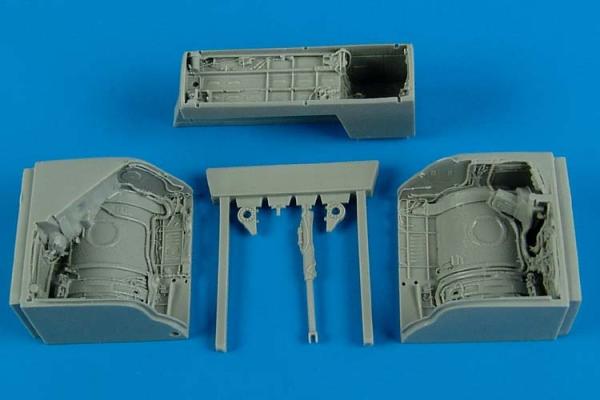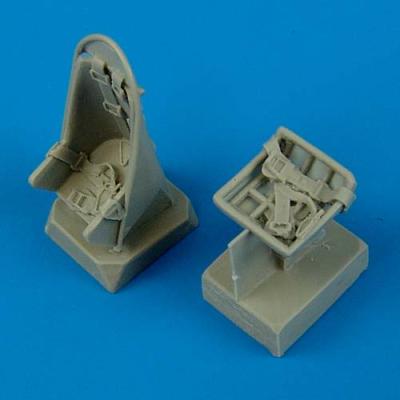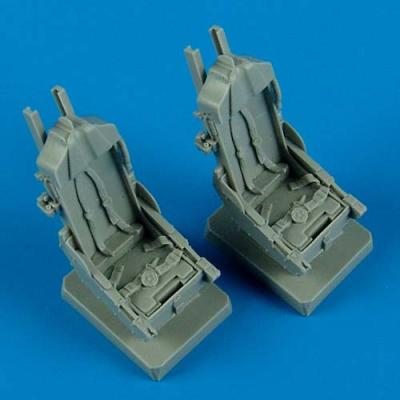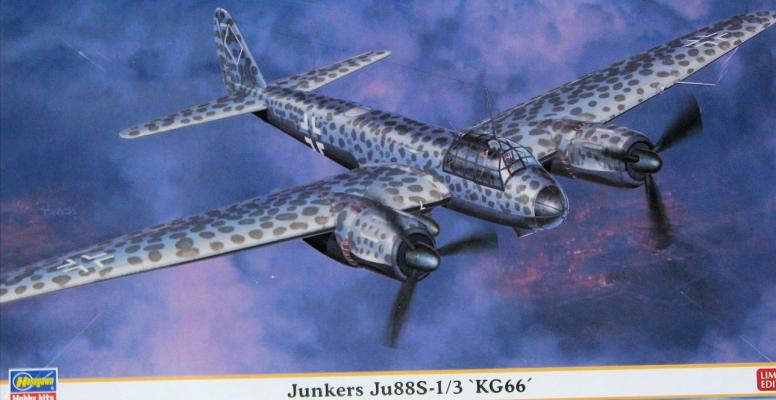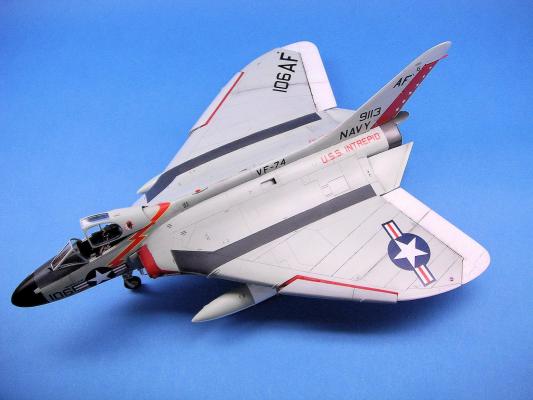The Trumpeter Mig-23M and MF kits in 1/48 finally give the modeler an alternative to the Esci Mig-23/27 family of kits. While it has its own issues, the Trumpeter kit renders the other one obsolete. One problem with the Trumpeter kit are the main wheel wells. Trumpeter’s wells are under detailed and worse yet are symmetrical from port to starboard. This is not the case with the Mig-23; the wheel wells are quite different from one side to the other. Aires has crafted a solution!
Welcome to the IPMS/USA Reviews site!
Introduction: The primary organization of the IPMS/USA Review website is by IPMS/USA National Contest Class. Within each Class there are sub-menus by kits, decals, books, etc. The Miscellaneous Class is for items that are not class specific or that cross two or more classes.
IPMS/USA Members: We encourage you to submit reviews, both here and to the Journal. To volunteer for membership in the IPMS/USA "Reviewers Corps" and submit your own reviews, please read the Guidelines For Submitting Product Reviews.
Manufacturers, publishers, and other industry members: IPMS/USA is pleased to offer your company the opportunity for product reviews. All product reviews are performed by IPMS/USA members, and are posted in the publicly-accessible section of our website. With very few exceptions, we perform full build reviews of new kit releases, aftermarket products, and supplies. If you would care to provide product samples for review, please contact John Noack, IPMS/USA 1st VP.
To learn more about IPMS/USA, please see our About Us page.
Hasegawa's 1/48th scale kit of the Stuka is a gem with great fit and detail and there are several aftermarket parts available for it. One thing that is lacking in the basic kit is seats with belts. Quickboost latest issue has that covered and is a two piece set with the pilots seats and gunners seat as separate parts. The parts are Quickboost's excellent, bubble and flash free gray resin. To use the parts is simple, cut the mold block off of each and sand.
I want to address the two parts individually. The attached photos of the pilot seat show the enormous improvement that the Quickboost seat is with its corrected shape, seat belts and much finer detail. in a word, the kit part is wrong and Quickboost fixes it in spades.
The gunners seat has the seat belts and the open structure. When compared to the kit seat (which I have already added PE seat belts too), the parts are pretty close for either. The Quickboost parts does have the belts so a slight edge to it.
AFV surprised a lot of people with a aircraft release as they normally do military vehicles. The f-5E/F series us superb and has all the needed detail for a great build. As with a lot of kits, the one thing they have trouble replicating is the ejection seat. Quickboost to the rescue with two sets of seats. one is for the single seat F-5e and one set for the two seat F-5F. The seats are the same in both sets which is why I combined the review. The casting quality is all the we have come to expect with no flash, zero bubbles and that nice firm dark gray resin.
The comparison in the photo of the kit seat versus the Quickboost show just how much better the Quickboost seat is and it includes all the belts. The addition to the kit is simple, cut of the casting block, paint the seat and install it. Also shown in the pictures is a shot of the Quickboost seat in the cockpit of the kit- fit is perfect.
History
The Ju88 was first flown in 1936 and remained in production until the end of the war (or as factories were overrun). Probably the most versatile aircraft flown by the Luftwaffe in WWII as it was used as a level bomber, dive bomber, torpedo bomber, reconnaissance, photo reconnaissance, day fighter, night fighter, pathfinder, pilotless missiles… (You get the picture). The Ju 88S version was developed to be a high speed, low drag bomber. Due to increasing armor and armament, the idea of a ‘Schnellbomber’ that could evade or make interception a tough thing to do was becoming a problem for the Ju 88s by the summer of 1942. The S version used an A-4 airframe as a starting point that was aerodynamically refined and was first flown in 1942. The refinements included deletion of the ventral gondola, a smoothly rounded Plexiglas nose and reducing the armoring. Also the defensive armament was reduced to 1 MG 131 firing aft.
After Dave Morrissette performed his construction magic, he returned the subject to me for paint, decals and find assembly. I cannot say enough about the quality of this kit and it’s all there. The only items used other than kit supplied were “Remove Before Flight” ribbons and intake covers.
As to paint, I wet sanded the entire model with 600 wet sand paper followed by Alclad II grey primer with microfillers. I was concerned that the primer might fill the exquisitely engraved panel lines, but not so. They took a brown/grey acrylic wash perfectly. The underside white used was Tamiya gloss white, decanted and sprayed through a Paasche “H” model airbrush at 12 lbs pressure. This dries quickly to a high gloss in about 30 to 45 minutes. The light gull grey used on the topside was Floquil S.P. Lettering Grey, a perfect match for the Gull Grey.











